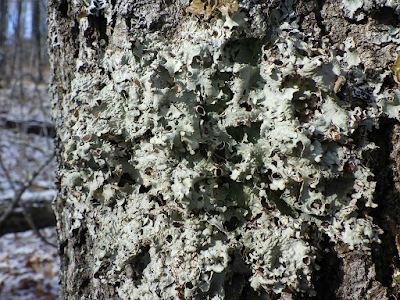As I was teaching down at the Raven lake fen, amongst all the emerging dragonflies I was reflecting on how peatlands are quite unique ecosystems. With very little nutrient availability due to the low pH and oxygen levels plants have acquired some interesting adaptations to survive these harsh environments. One of the coolest of these is carnivory as seen in the sundews and the northern purple pitcher plant. Although both species acquire nutrients by digesting insects, they do it in very different ways, hinting to the fact they are not closely related. Sundews secrete a sweet, sticky substance on the tentacles on their leaves, while insects fall into the traps of the pitcher plant. Sundews are in the order caryophyllales along with cacti and beets, pitcher plants are in the order ericales along with the blueberry family. Two extremely distant plants, with similar adaptations to grow in the same environment, an excellent example of convergent evolution.
Northern purple pitcher plant
Round leaved sundew
These ecosystems are extremely diverse and full of organisms with absolutely fascinating adaptations and niches. One of the most surprising places to explore this diversity is within the pitchers of the purple pitcher plant. In addition to rainwater that falls in, the plant secretes acids and digestive enzymes. Although the pitchers are only weakly acidic, it still does not seem like the likeliest place to find living insects. But there is a whole community of specially adapted bacteria, protists, algae and invertebrates that are obligates and can only survive in this environment. The purple pitcher plant is know to house at least 165 species of inquilines, I'd guess most of these are near microscopic. Two of these species I saw today were the pitcher plant mosquito (Wyeomyia smithii) and the pitcher plant midge (Metriocnemus knabi). Both species have perfecctly adapted to life in the pitcher, they can withstand the slightly lower pH and apparently the digestive enzymes. The benefit to life in a pitcher? Easy access to dead or trapped prey that cannot escape. These species are excellent models of another important biological concept - niche partitioning. To avoid competition in this small area, these species have evolved to occupy different niches. The midge occupies primarily the bottom of the pitcher and feeds mostly on the dead things that sink down there. The mosquito is the apex predator in this micro-ecosystem, it occupies the entire water column and eats both living and dead invertebrates that have fallen in the pitcher.

Pitcher plant midge (Metriocnemus knabi)
Pitcher plant mosquito (Wyeomyia smithii)
Most pitcher plants have adapted to digest invertebrates that fall into them. Some like Nepenthes lowii primarily rely on the feces of shrews for their nitrogen and have unique adaptations for that. Based on the high populations of both the midge and mosquito in the pitchers I investigated today, I would assume that both species play a significant role making nitrogen available to the pitcher plant. By consuming insects and producing waste these species transform the nitrogen locked in living tissues into forms absorbable by the pitcher. I would assume that there is a continuum in how pitcher plant species acquire nitrogen ranging from highly carnivorous to relying on other species to do the processing for them. I would guess that that continuum (if it exists) would also be reflected in the pH and concentration/diversity of digestive enzymes. Purple pitcher plants have a diverse inquiline community, and based on what I saw today have pretty high populations. I'd guess this species is pretty far on the continuum towards relying on mutualistic relationships to aquire nutrients rather than on its own ability to break down insects. I'll have to see if I can find any information pertaining to these ideas. Do these traits for digestion/supporting inquilines vary by individuals, populations, species... There are also a handful of other inquilines that are easily identified and seen by the naked eye, maybe I'll find some more of them as I further explore.






Comments
Post a Comment